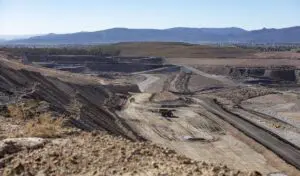The fast emerging distributed battery storage market in Australia is attracting international players, with Germany’s BayWa renewable energy (r.e.) the latest to step in.
Speaking to RenewEconomy on the back of its acquisition of Perth-based solar and storage distributor and developer Solarmatrix, BayWa r.e. managing director Günter Haug said that battery storage represented a “second revolution” in renewable energy provision in the country.
BayWa r.e. announced that it had struck a deal to acquire Solarmatrix last Friday, with the Perth company set to become BayWa r.e. on the deal’s closure in the coming weeks.
The rebadged company will retain its management team, including managing director Dumus Yildiz who spoke of the importance in ensuring quality battery systems are installed in Australian homes, given the inherent dangers in electro chemical storage.
“This is coming from someone who has been selling batteries for 16 years,” Yildiz told RenewEconomy. “Even when only dealing with lead-acid batteries, education is a key element for the industry, not to put fear into our clients’ heads and take that message to their clients, but it really is a serious issue that people should think twice about what they are buying, and it is our role to train them and take the message out [into the market].”
In a pattern that has emerged in the past two years in an established solar market like Germany, BayWa r.e. are clearly looking for opportunities from the battery storage segment. While ever falling solar prices and fierce competition results in squeezed margins for installers and wholesalers, battery storage is proving a valuable additional revenue stream. Retrofitting existing PV arrays is also proving to be an encouraging market.
“There is high irradiation, good irradiation throughout the year [in Australia], so it makes sense to add battery storage allowing a high percentage of electricity demand to be covered by PV – this applies to domestic homes and also industrial customers,” said BayWa r.e. managing director Günter Haug. “We believe the Australian market will be a very dynamic one, driven by storage and we believe it is now the right time to enter.”
BayWa r.e. currently supplies battery systems from LG Chem, which is understood to enjoy large market share in Australia at present, Tesla Energy and new entrant Mercedes Benz’s storage products.
BayWa r.e. is backed by publically listed agricultural and industrial giant BayWa AG and Haug noted that the company had carried out an analysis of a number of markets before deciding on Australia as the latest step in its international expansion. The company recently expanded through acquisition into the European Benelux markets.
“There is always the question, whether to make or to buy,” said Haug. “Make would have been taking a person and to build up a new company in Australia. We chose the path to acquire the Solarmatrix team,” explained Haug. “A good basis for the future growing business, is the very good technical expertise of Solarmatrix, which allows us to do not only grid connected systems but also fuel saving and standalone systems.”
The existing German connection, with Solarmatrix’s Yildiz hailing from the country, was also a factor. However, notes Haug, “that was not a condition, but helpful.”
BayWa r.e. hopes for Solarmatrix to use the backing of its German parent to grow to become a national player in the Australian solar market. Haug added that BayWa r.e.’s large scale project team, ostensibly for PV power plants larger than 5 MW, are already looking closely at the Australian market and will be potentially collaborating with Yidilz and his Perth-based operation.








